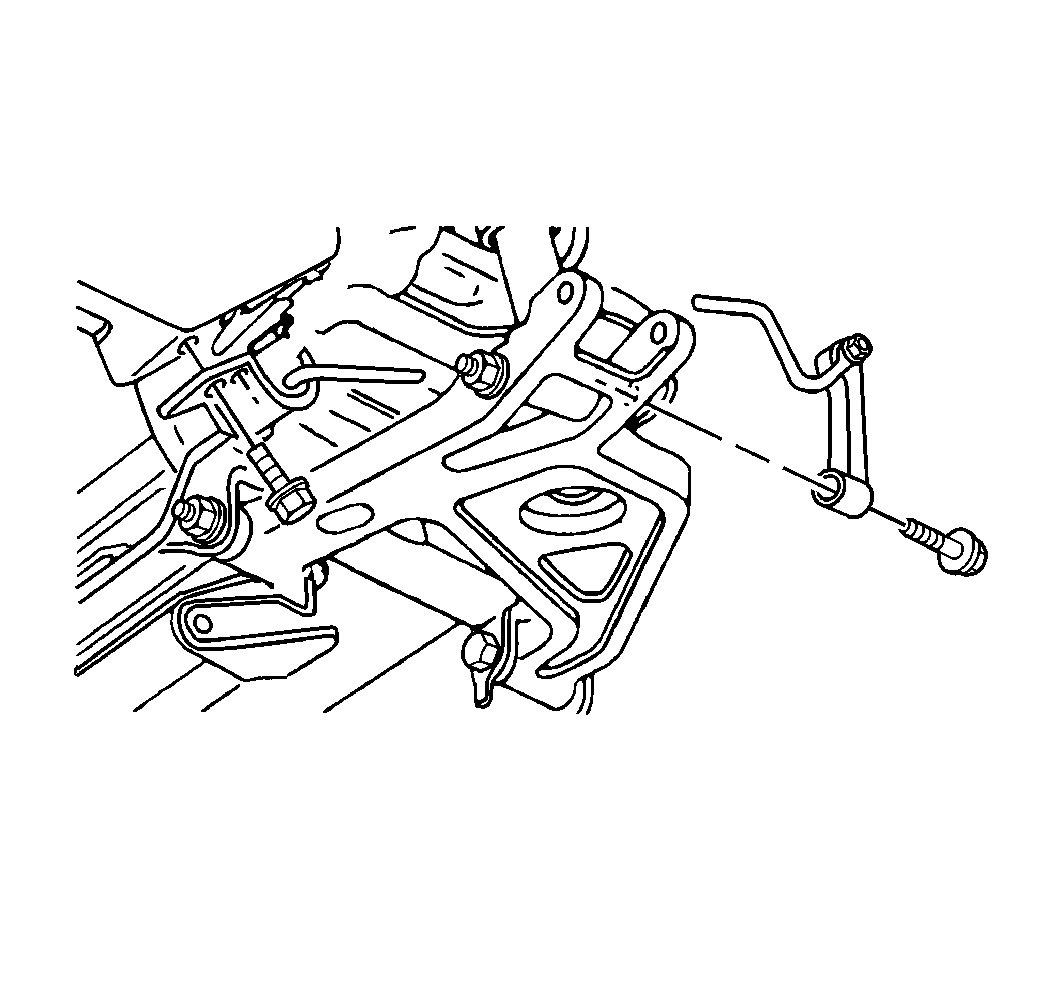For 1990-2009 cars only
Removal Procedure
- Raise and support the vehicle. Refer to Lifting and Jacking the Vehicle in General Information.
- Remove the tire and wheel. Refer to Tire and Wheel Removal and Installation in Tires and Wheels.
- Remove the stabilizer shaft links. Refer to Stabilizer Shaft Link Replacement .
- Remove the stabilizer shaft bracket bolts.
- Remove the stabilizer shaft brackets.
- Remove the stabilizer shaft insulators from the stabilizer shaft.
- Support the exhaust system.
- Remove the exhaust system hangers and lower the exhaust system.
- Lower and support the exhaust system at the rear.
- Remove the stabilizer shaft from the vehicle.

Installation Procedure
- Install the stabilizer shaft to the vehicle.
- Raise the exhaust system back into place.
- Install the stabilizer shaft insulators to the stabilizer shaft.
- Install the stabilizer shaft brackets.
- Install the stabilizer shaft bracket bolts.
- Tighten the stabilizer shaft bracket bolts.
- Install the stabilizer shaft links. Refer to Stabilizer Shaft Link Replacement .
- Install the tire and wheel. Refer to Tire and Wheel Removal and Installation in Tires and Wheels.
- Lower the vehicle.

Notice: Use the correct fastener in the correct location. Replacement fasteners must be the correct part number for that application. Fasteners requiring replacement or fasteners requiring the use of thread locking compound or sealant are identified in the service procedure. Do not use paints, lubricants, or corrosion inhibitors on fasteners or fastener joint surfaces unless specified. These coatings affect fastener torque and joint clamping force and may damage the fastener. Use the correct tightening sequence and specifications when installing fasteners in order to avoid damage to parts and systems.
Tighten
Tighten the stabilizer shaft bracket bolts to 60 N·m (44 lb ft).
